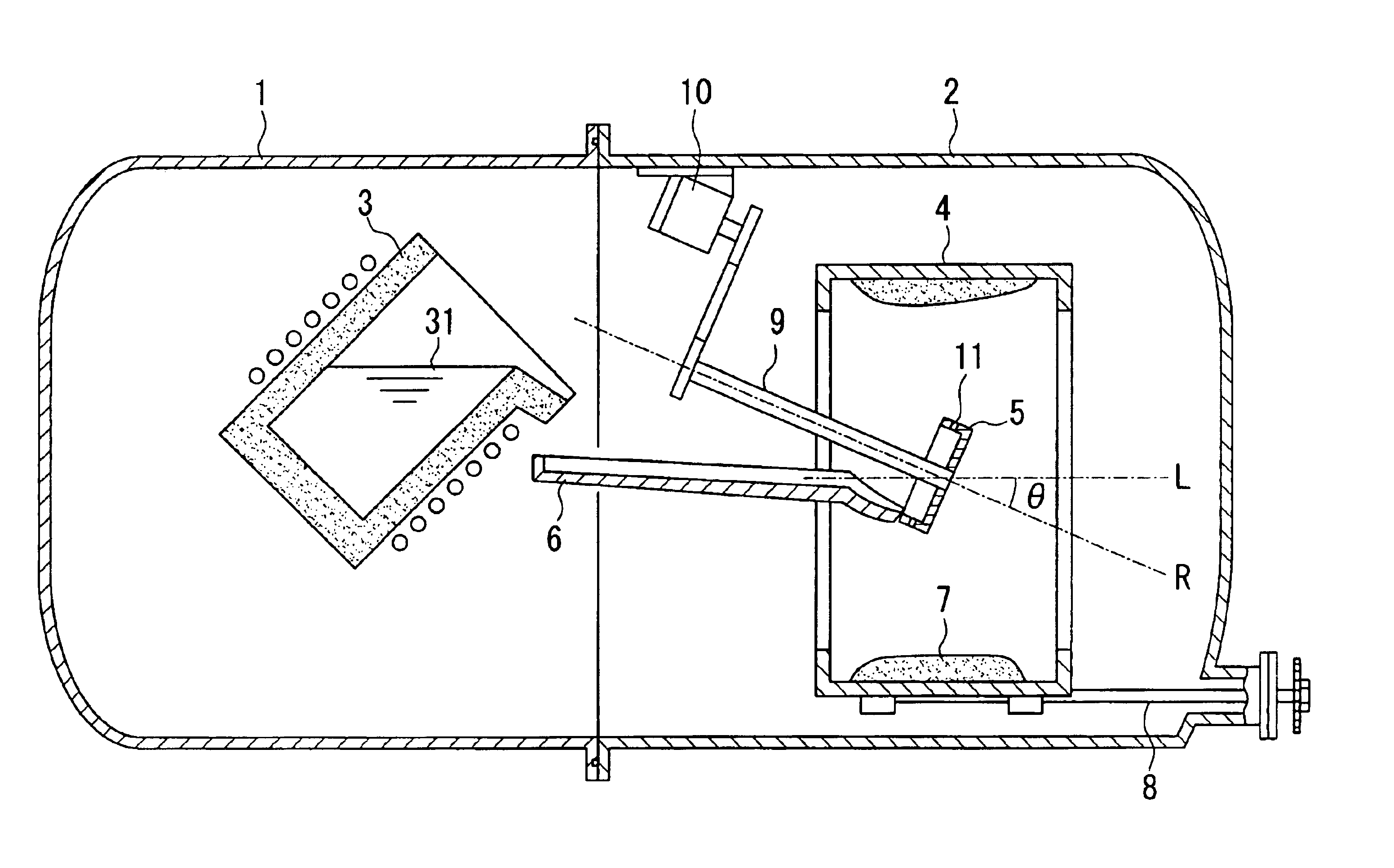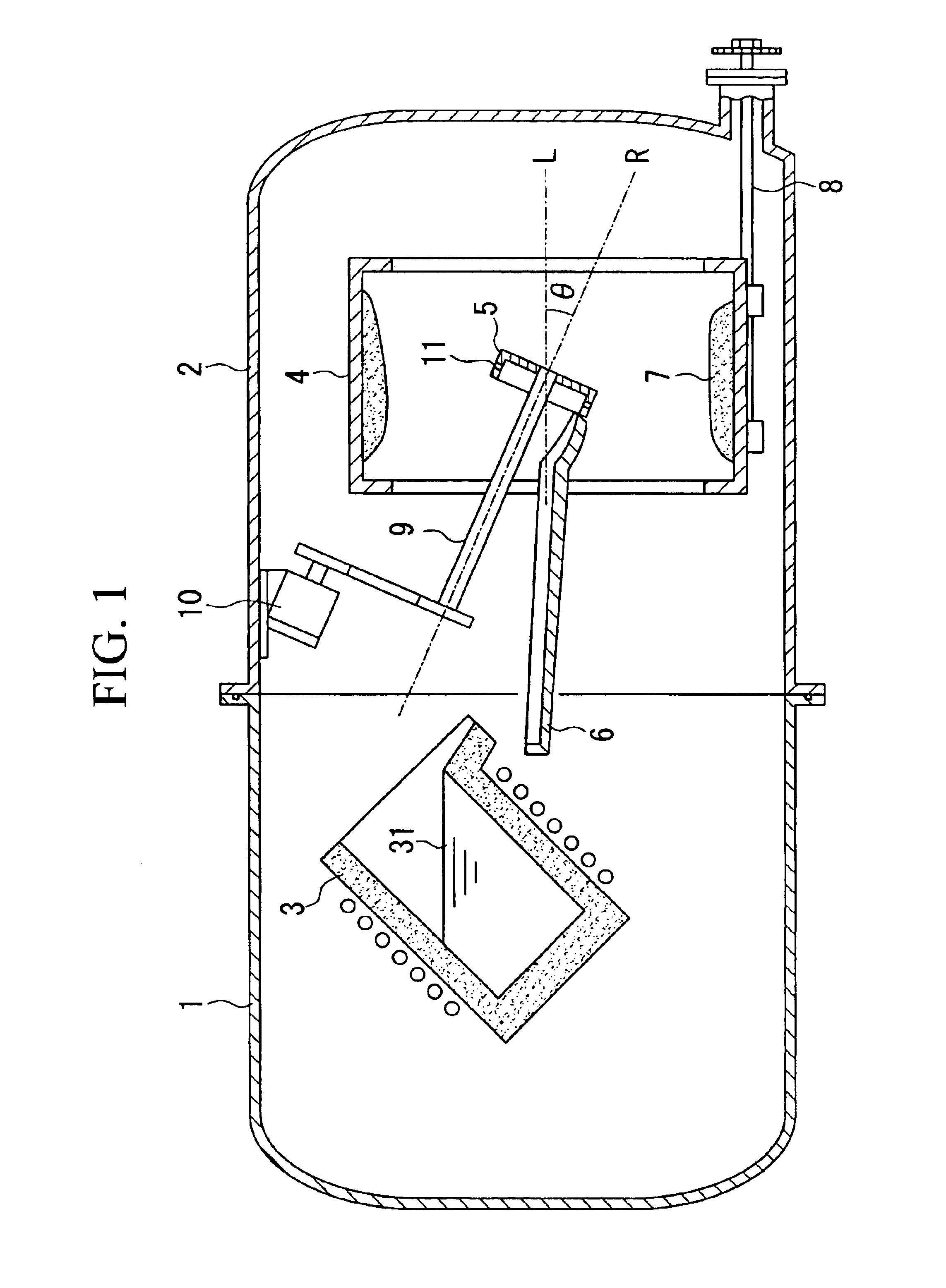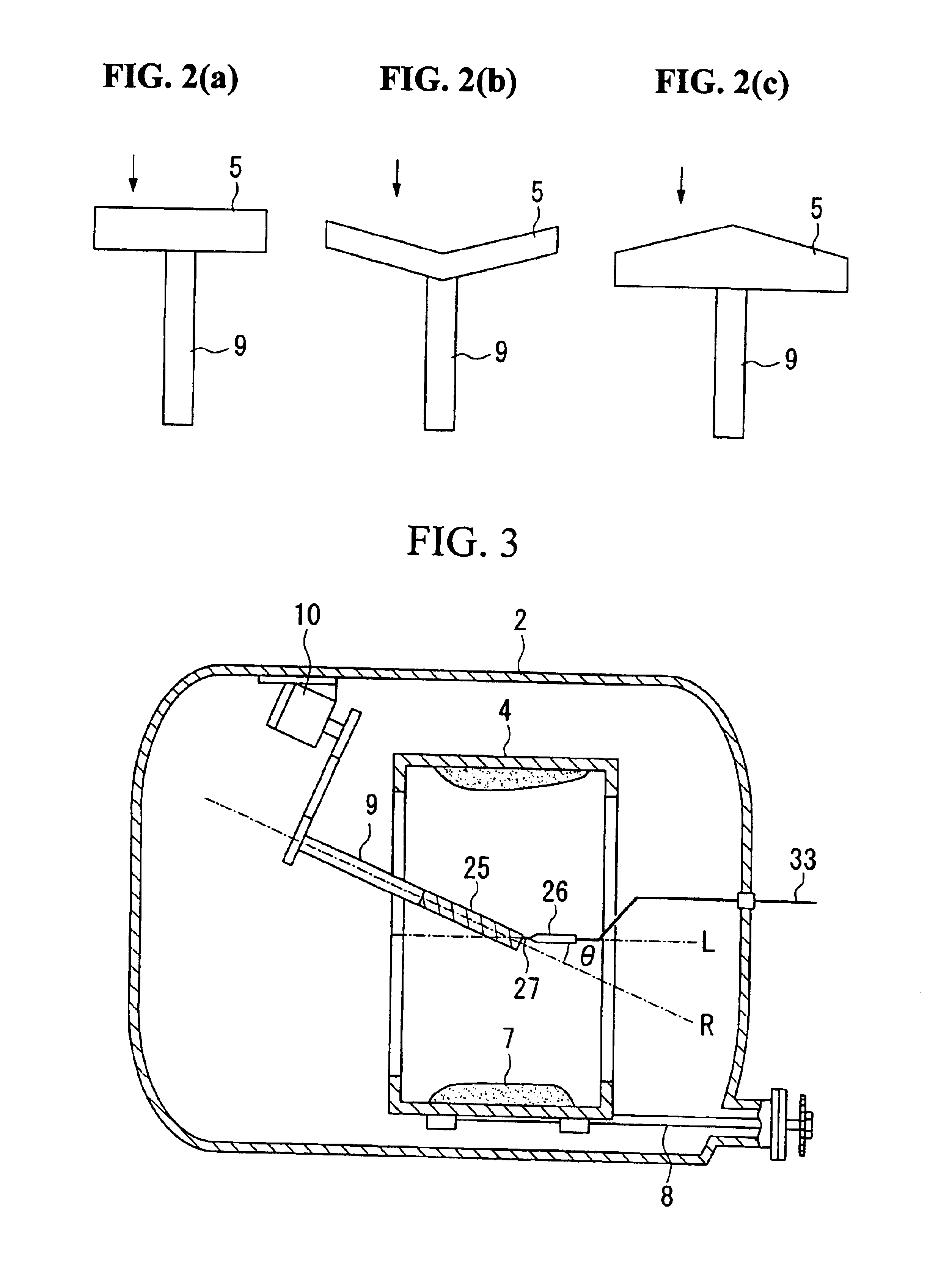Centrifugal casting method, centrifugal casting apparatus, and cast alloy produced by same
a centrifugal casting and centrifugal casting technology, which is applied in the manufacture of inductance/transformer/magnet, magnetic materials, magnetic bodies, etc., can solve the problems of deteriorating crushability of alloy in the magnet production step, unable to achieve high density of the resultant magnet, and unable to enhance coercivity to a magnet,
- Summary
- Abstract
- Description
- Claims
- Application Information
AI Technical Summary
Benefits of technology
Problems solved by technology
Method used
Image
Examples
example 1
Elemental neodymium, elemental dysprosium, ferroboron, aluminum, and electrolytic iron were weighed and mixed so as to obtain the following composition: Nd: 12.6 at. % (28.0% by mass); Dy: 0.6 at. % (1.5% by mass); B: 6.0 at. % (1.0% by mass); Al: 0.7 at. % (0.30% by mass); and a balance of iron. The resulting mixture was melted in an alumina crucible in an argon gas atmosphere by use of a high-frequency induction melting furnace. The resulting molten mixture was subjected to casting by use of the centrifugal casting apparatus shown in FIG. 1.
The cylindrical mold 4 was of an inside diameter of 500 mm and a length of 500 mm. The container-like rotary body 5 was of an inside diameter of 250 mm, and eight hole portions 11 of a 2 mm diameter were formed in the sidewall thereof. The angle of inclination .theta. formed by the axis of rotation R of the container-like rotary body 5 and the axis of rotation L of the cylindrical mold was fixed to 25 degrees during casting.
The average molten-m...
example 2
In order to obtain a composition in which TRE is further decreased, elemental neodymium, ferroboron, aluminum, and electrolytic iron were weighed, mixed so as to have the following composition: Nd: 12.4 at. % (28.0% by mass); B: 5.9 at. % (1.0% by mass); Al: 0.7 at. % (0.30% by mass); and a balance of iron. Casting was performed by use of an apparatus similar to that used in Example 1 under the same conditions as those of Example 1.
During casting, the container-like rotary body 5 was moved such that the angle of inclination .theta. formed by the axis of rotation R of the container-like rotary body 5 and the axis of rotation L of the cylindrical mold is varied continuously between 0 degree and 25 degrees. The average molten-material deposition rate was 0.004 cm / sec.
On the cross section of an ingot, the microstructure containing the dendritic .alpha.Fe phase occupied an area percentage of 3%, and crystal grains having an average diameter of 75 .mu.m as measured along a short axis and ...
example 3
In order to obtain a composition in which TRE is further decreased, elemental neodymium, ferroboron, and electrolytic iron were weighed and mixed so as to have the following composition: Nd: 11.6 at. %; B: 5.9 at. %; and a balance of iron. Casting was performed by use of an apparatus similar to that used in Example 1 under the same conditions as those of Example 1 except that the angle of inclination .theta. formed by the axis of rotation R of the container-like rotary body 5 and the axis of rotation L of the cylindrical mold was varied continuously between 0 degree and 25 degrees and that the average molten-material deposition rate was 0.003 cm / sec.
The thickness of an ingot was substantially uniform; specifically, an average of 6 mm. FIGS. 8 and 9 show back scatterd electron micrographs of a cross section of an ingot. FIG. 9 is a partially enlarged view of FIG. 8. FIG. 8 shows the generation of the gray T1 phase serving as the matrix phase, a small amount of dendritic .alpha.Fe pha...
PUM
| Property | Measurement | Unit |
|---|---|---|
| angle of inclination | aaaaa | aaaaa |
| angle | aaaaa | aaaaa |
| deposition rate | aaaaa | aaaaa |
Abstract
Description
Claims
Application Information
 Login to View More
Login to View More - R&D
- Intellectual Property
- Life Sciences
- Materials
- Tech Scout
- Unparalleled Data Quality
- Higher Quality Content
- 60% Fewer Hallucinations
Browse by: Latest US Patents, China's latest patents, Technical Efficacy Thesaurus, Application Domain, Technology Topic, Popular Technical Reports.
© 2025 PatSnap. All rights reserved.Legal|Privacy policy|Modern Slavery Act Transparency Statement|Sitemap|About US| Contact US: help@patsnap.com



